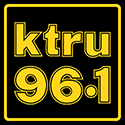By Jacob Pellegrino
2021 was an immensely unconventional year for entertainment: from concerts and cinema to large festival events. SXSW 2021 was no exception to the necessity to improvise around an established in a new, remote format. Although nothing can fully match the experience of large crowds and the movement of a festival atmosphere, SXSW created a simple app and website driven experience that allowed for compartmentalized viewing of the festival’s events. This interface removed a lot of the chance occurrences that would happen at the physical festival but also allowed for convenient viewing and an easier ability to see everything one might want to.
Much of the overall experience depended on how well a viewer could set up their system to watch the movies and sessions. A highlight for me was the movie Somewhere You Feel Free, a documentary about the making of Tom Petty’s Wildflowers, an album that just had its second, shelved half released shortly before the screening. The movie was based on a wealth of previously unreleased 16mm film combined with new interviews from the album’s producers and musicians associated with Petty. These elements created an almost collage-like feeling to the experience of the movie as differing elements combined into a cohesive whole. Demos and final album cuts from the Wildflowers sessions helped to keep the film true to its subject matter and enjoyable for audiences.
Director Mary Wharton created an informative and engaging documentary that takes on the feel of a tribute after the death of Petty in late 2017. The film functioned as a capsule of Petty’s creativity and feelings at the time of the album’s recording. It was also aesthetically well-done with the juxtaposition of 16mm film segments with recent interviews. Petty is quoted in the documentary saying that he’s “not really sure why [Wildflowers] is as good as it is,” a testament to the album’s unique feeling and inimitable sound.
On my 13 inch MacBook, the movie screenings were still enjoyable, but one of the things that I loved about the experience was when the festival fully leaned into its new and temporary format. One of the best examples of this was the Tiny Desk Meets SXSW segments that premiered on the last day of the festival. All filmed at the artists’ homes, the pre-recorded concerts would not happen in any other year.
My favorite was Clipping’s show, which not only was unique in its at-home nature but leaned into the zaniness possible with the format by taking the title “Tiny Desk” a little too seriously. The group created a unique performance with tiny microphones, audio effects, and laptops that encompassed their whole career together. Although it lacked the raw energy and experience of a live performance, I love how it embraced the limitations of its distant delivery to create a new experience.
Overall, the festival could never have been like it normally is, lacking the physicality and direct community. Efforts such as the social side of the app tried to recreate the chance encounters of a physical festival, but I did not put in as much time as I could have on the social side. As one might expect, I did not find the connections that I likely would have in person. However, no festival could reclaim its usual feeling in the time of COVID and SXSW’s effort was largely successful at creating a convenient and curated experience for attendees.
